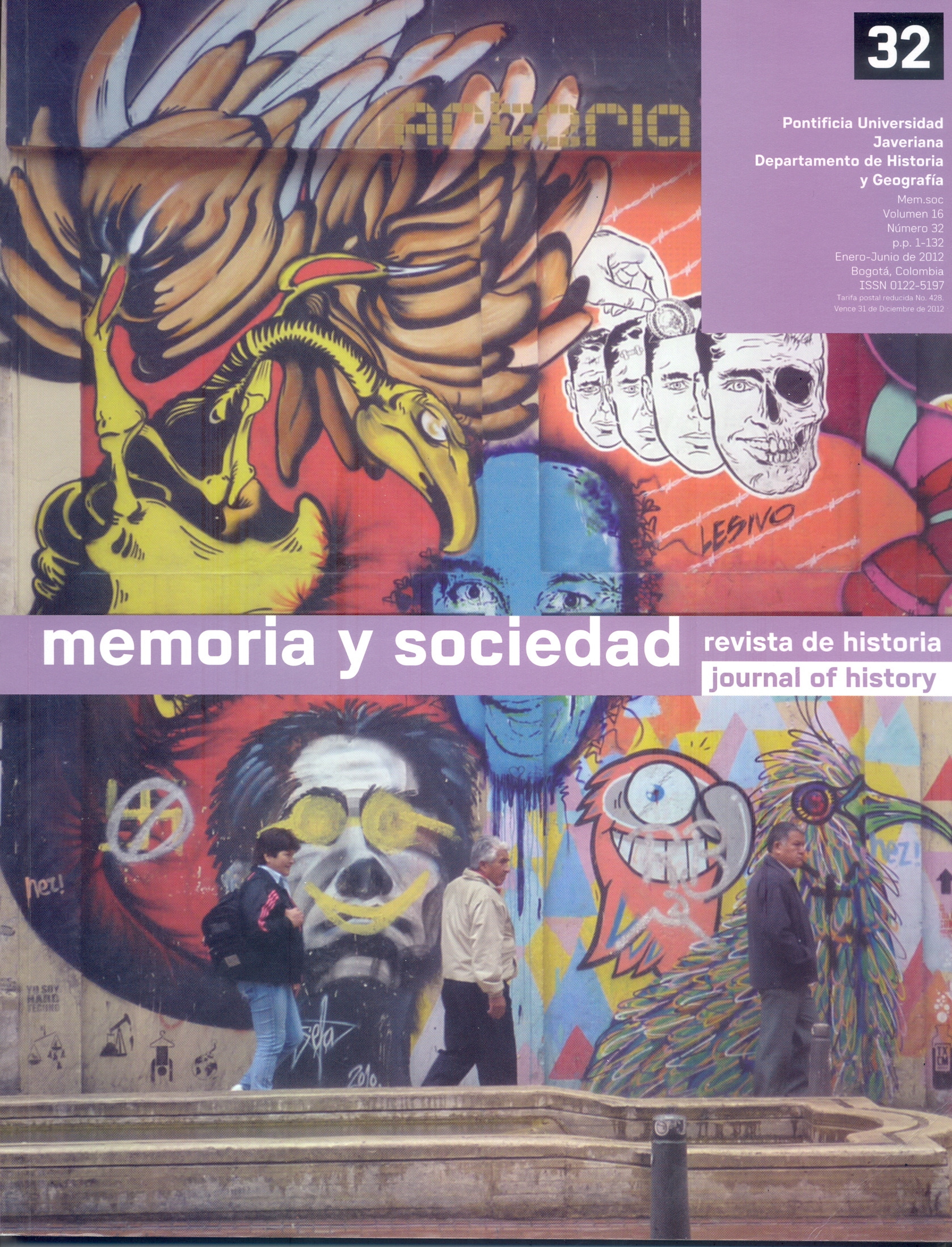Abstract
The 1960s was a crucial decade in the consolidation of the artistic discipline in Colombia, and this motivates to reconstruct the art history of the country. During these years, the study of the artistic production through the colonial “neogranadian” period was studied by authors who shaped and strengthened the category of “Colonial art”. This category, far from being homogeneous, was determined by each author according to their own theoretical horizons and their respective places of production, establishing two different ways of legitimacy: either by way of tradition, or by the rupture and the transgression path. The aim of this essay is to understand the historiographical production of places of experience, truth and observation during the moment in which the discipline of art history was consolidated in Colombia.The journal Memoria y Sociedad is registered under a Creative Commons Attribution 4.0 International Public License. Thus, this work may be reproduced, distributed, and publicly shared in digital format, as long as the names of the authors and Pontificia Universidad Javeriana are acknowledged. Others are allowed to quote, adapt, transform, auto-archive, republish, and create based on this material, for any purpose (even commercial ones), provided the authorship is duly acknowledged, a link to the original work is provided, and it is specified if changes have been made. Pontificia Universidad Javeriana does not hold the rights of published works and the authors are solely responsible for the contents of their works; they keep the moral, intellectual, privacy, and publicity rights.
Approving the intervention of the work (review, copy-editing, translation, layout) and the following outreach, are granted through an use license and not through an assignment of rights. This means the journal and Pontificia Universidad Javeriana cannot be held responsible for any ethical malpractice by the authors. As a consequence of the protection granted by the use license, the journal is not required to publish recantations or modify information already published, unless the errata stems from the editorial management process. Publishing contents in this journal does not generate royalties for contributors.

